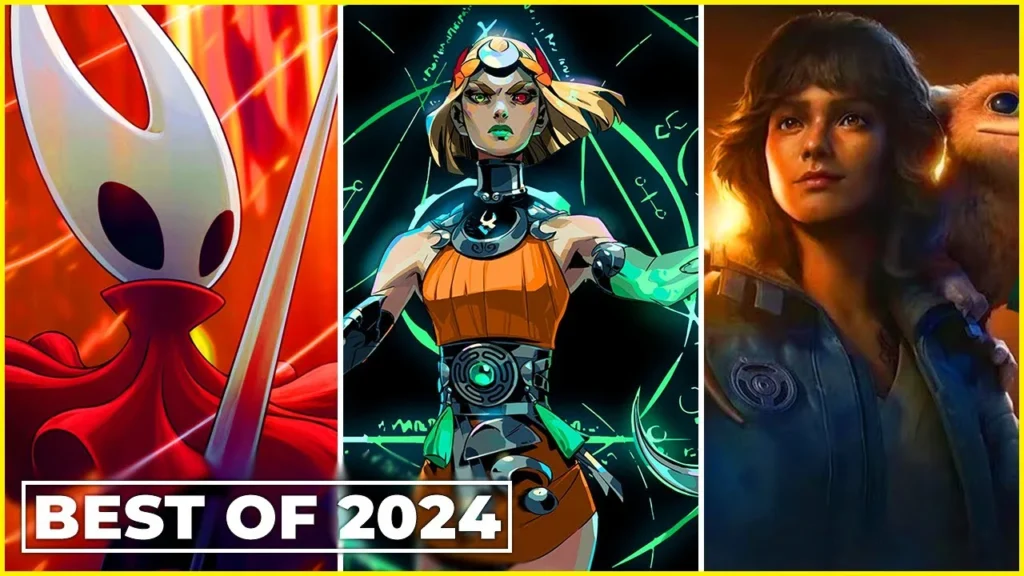The rise of indie games has revolutionized the gaming landscape, showcasing how small studios are changing the industry with creativity and innovation. Unlike traditional game development, which often involves large teams and significant budgets, indie developers are breaking barriers by creating unique experiences that resonate with players on a personal level. This shift not only democratizes game development but also enriches the gaming culture with diverse narratives and artistic styles.
In this article, we will delve into the factors contributing to the success of indie games, including the impact of digital distribution platforms and community support. You will learn about the inspiring stories of indie developers who have turned their passion into successful ventures, proving that great games can come from anywhere. Additionally, we will explore how these small studios are challenging the norms of the gaming industry, pushing boundaries, and setting new trends that larger companies are beginning to follow.
As we journey through the world of indie games, you will discover the significance of player engagement and the role of social media in promoting these unique titles. We will also highlight some standout indie games that have made a significant impact, illustrating the potential of small studios to create memorable gaming experiences. Join us as we uncover the transformative power of indie games and why they are essential to the future of the gaming industry.
Indie games have surged in popularity over the past decade, transforming the gaming landscape and offering unique experiences that often differ from mainstream titles. This article explores the various aspects of this phenomenon, highlighting how small studios are making a significant impact on the industry.
The Evolution of Indie Games
The journey of indie games began in the early 2000s, with developers seeking creative freedom outside the constraints of large publishers. This evolution has led to a diverse range of genres and styles, from pixel art platformers to narrative-driven adventures. The rise of digital distribution platforms like Steam and itch.io has further facilitated this growth, allowing indie developers to reach a global audience without the need for traditional retail channels.
As technology has advanced, so too have the tools available to indie developers. Game engines like Unity and Unreal Engine have democratized game development, enabling small teams to create high-quality games with relatively low budgets. This accessibility has encouraged a wave of innovation, as developers experiment with new gameplay mechanics and storytelling techniques that challenge conventional norms.
The Impact of Crowdfunding
Crowdfunding platforms such as Kickstarter and Indiegogo have revolutionized the way indie games are financed. These platforms allow developers to present their ideas directly to potential players, securing funding before the game is even completed. This model not only provides financial support but also fosters a community of backers who are invested in the game’s success.
Successful crowdfunding campaigns have led to the creation of critically acclaimed titles like “Shovel Knight” and “Hollow Knight.” These games not only demonstrate the viability of the indie model but also highlight the importance of community engagement in the development process. By involving players early on, developers can gather feedback and build a loyal fanbase that will support their future projects.
Unique Storytelling and Artistic Expression
One of the defining characteristics of indie games is their emphasis on unique storytelling and artistic expression. Unlike mainstream titles that often prioritize commercial success, indie developers are free to explore unconventional narratives and themes. This has resulted in a plethora of games that tackle complex issues such as mental health, identity, and social justice.
Games like “Celeste” and “Life is Strange” exemplify how indie studios can create emotionally resonant experiences that resonate with players on a personal level. The artistic styles of these games also vary widely, from hand-drawn visuals to minimalist designs, showcasing the diverse creative talents within the indie community.
The Role of Community and Player Feedback
Community engagement is a crucial aspect of the indie game development process. Many indie developers actively seek feedback from players during the development phase, using platforms like Discord and Reddit to gather insights and suggestions. This collaborative approach not only helps refine the game but also fosters a sense of ownership among players.
Moreover, indie games often thrive on word-of-mouth marketing, with players sharing their experiences on social media and streaming platforms. This organic promotion can lead to viral success, as seen with titles like “Among Us,” which gained immense popularity through community-driven content creation. The relationship between developers and players is more intimate in the indie scene, creating a vibrant ecosystem that benefits both parties.
Challenges Faced by Indie Developers
Despite their successes, indie developers face numerous challenges in the competitive gaming market. Limited budgets and resources can hinder marketing efforts, making it difficult for small studios to gain visibility among the plethora of new releases. Additionally, the pressure to deliver a polished product can be overwhelming, especially for teams with little experience in the industry.
Moreover, the rise of indie games has led to an influx of titles, resulting in market saturation. Standing out in a crowded marketplace requires innovative marketing strategies and a strong understanding of target audiences. Many indie developers must wear multiple hats, taking on roles in marketing, community management, and customer support, which can stretch their resources thin.
The Future of Indie Games
The future of indie games looks promising, with an increasing number of players seeking unique and diverse gaming experiences. As technology continues to evolve, indie developers will have access to even more powerful tools and platforms, enabling them to push the boundaries of creativity and innovation.
Furthermore, the growing acceptance of indie games within the mainstream gaming community is encouraging more players to explore titles outside of major franchises. As the industry continues to evolve, it is likely
| Aspect | Description |
|---|---|
| Definition of Indie Games | Indie games are video games created by individuals or small teams without the financial support of a large game publisher. |
| Historical Context | The indie game movement gained momentum in the late 2000s, with titles like “Braid” and “Super Meat Boy” showcasing the potential of small studios. |
| Creative Freedom | Indie developers often have more creative freedom compared to large studios, allowing for innovative gameplay and unique storytelling. |
| Access to Tools | Advancements in technology and the availability of game development tools (e.g., Unity, Unreal Engine) have made it easier for indie developers to create games. |
| Distribution Platforms | Platforms like Steam, itch.io, and the Epic Games Store provide indie developers with access to a global audience, reducing the need for traditional publishing. |
| Community Engagement | Indie developers often engage directly with their communities through social media and crowdfunding platforms, fostering a loyal fanbase. |
| Impact on the Industry | Indie games have introduced new genres and gameplay mechanics, influencing larger studios and diversifying the gaming landscape. |
| Challenges Faced | Despite their successes, indie developers face challenges such as funding, marketing, and competition from larger studios. |
| Future Trends | The future of indie games looks promising, with increasing support from platforms and a growing acceptance of diverse narratives and gameplay styles. |


